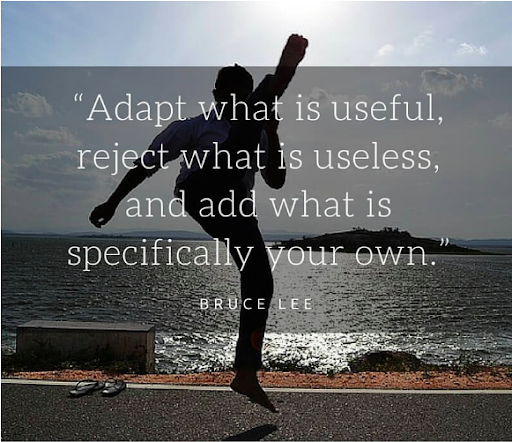Understanding and navigating company culture is an important skill to develop as a project manager in order to work collaboratively with your team and with management. You may be great at putting together project plans, running efficient stand-ups, and facilitating team meetings, but if you are not able to adapt to the company culture early on and be accepted by your team, then it's difficult to gain credibility, respect, and traction to get things accomplished.
Basic Tips for Successfully Navigating Company Culture
Sometimes, you may feel like a victim in a finger pointing culture. Rather than playing the victim and not getting things done because you feel you work in a dysfunctional or toxic culture, establish yourself as someone who can quickly get up to speed without much direction or guidance. Be independent.
Don’t push processes on the team in the name of best practices. That may not go over well. Be open to suggestions and ideas of what works well in that organization and what team members want to see changed. They are your true sounding board. The important thing to remember is that you are there to get things moving, together with the team, in a forward direction; it is your responsibility to complete projects on time and on budget with minimal interruptions, noise, and disruptions outside the team.
 Image courtesy of Shutterstock
Image courtesy of Shutterstock
I’ve worked in different company environments, ranging from start-up e-commerce companies to large telecom companies and large retail e-commerce companies, and they all have one thing in common: their culture changes over time.
The culture that you adapt to on the first day on the client site will change, and so will the company's people and management. Stay focused on basic project management principles, and always exhibit a positive, can-do attitude, listening carefully and understanding ideas others are trying to convey to you. Be open to criticism, own the issues, and do your best to ensure that people stay positive and are having fun doing their jobs.
Be the social coordinator. Inject fun into the project team by keeping things light and simple. As an example, I brought in Nerf toys, which people initially thought was a little strange, but then they got used to shooting hoops outside their cubes. I’ve also brought in many treats, such as chips, candies, and cookies to a common area. If you can develop a reputation as someone who is easy to work with, a thought partner, a team player, and a reliable resource to get things accomplished in any role assignments while making things fun as a project manager, program manager, or scrum master, your position will be solidified in the company culture.
This poetic quotation from Bruce Lee speaks to the resourcefulness needed to succeed in different types of environments.

Image courtesy of KeepInspiring.Me
Understanding the Different Phases of Company Culture
There are many phases and flavors of company culture that exist in an organization and even within various departments of the same organization. As I mentioned earlier, company cultures are dynamic and change (dramatically or subtly) over time. Below I've described an example of this growth and broken it down into three phases based on my experience of working with a retail e-commerce company over an 8-year period.
(My experience at this company was not isolated--I have encountered the same cycle at another e-commerce company, where I was part of both the "Prosperity/Startup Phase" and, after approximately 7 years, a transition into the "Reset/Transitional Phase," which eventually grew into the "Opportunity/Mature Phase.")
1. The Prosperity Phase
When I joined, the company was pursuing big plans for expansion and enhancement. There was a sense of urgency and momentum typical of a startup environment. From my very first day with this company, I felt a sense of ownership and camaraderie within the team. The culture was defined by people who were motivated, energized, positive, and cordial to one another. Management emphasized that there was no place to blame or fault others, and it was great to see people dedicated and willing to take on risks and to appreciate differing viewpoints. There were social gatherings held outside the workplace after hours, which formed a basis of trust and friendship and enabled a collaborative culture.
Over the course of approximately 7 years, however, the culture changed, and so did its people. From my perspective, the culture seemed to change from a startup to a slower growth, “mature” company where revenue growth was not accelerating as fast. This is what I call the Reset Phase.
2. The Reset Phase
The Reset is a subtle, transitional phase, which in my experience takes place over the course of a year where there are budgeting and departmental reorganizations.
As the initial management team begins to leave the organization to pursue other opportunities, new leadership takes over and focuses on the fiscal discipline and operational expenses of the company, accelerating the reset.
The new leadership looks at ways to re-invent their business model to boost revenue growth while at the same time managing shrinking capital and expense budgets. That is when the culture starts changing, and people need to adapt to the direction set by the new leadership team. As the company shifts towards developing a strategy to revive the business, restructuring departments and the churn of people leaving (which can be good or bad) becomes prevalent throughout the organization, and hence moral may suffer.

As the frequency of the restructuring and churn increases, there are several opportunities for you to take advantage of this phase, where alignment to the new business strategy allows you to make a difference and stand out during the transition.
3. The Opportunity Phase
This is what I call the Opportunity Phase, since introducing ways to cut costs and implement process efficiencies to help stabilize churn will be what sets you apart. For example:
- One of the most common challenges and one of the biggest impacts to a project budget that I have encountered is scope creep, technical discoveries, or cost overruns which increase the need for additional funding. Requesting additional funding to complete a project means a difficult conversation with management, especially in an environment where costs are always scrutinized at a detailed level. Because of this, it's really important to carefully track scope/technical changes and document and obtain approval from management before working on changed scope, especially if it impacts project timelines. Even though engineering is confident that they can absorb the change, the QA team will also need to weigh in on the scope change to assess whether there will be further impact to timelines or costs. Managing scope creep carefully and being transparent about it keeps cost overruns down. This is where you can provide the biggest value in your role as a project manager.
- Make it known to the PMO management that you are willing to take on more projects/more complex projects. Taking on additional projects and/or volunteering to manage more Agile-related initiatives helps keep project manager or scrum master overhead to a minimum within the PMO organization so that your hourly rates are spread across multiple initiatives and your billable rates do not become part of the cost cutting equation.
- Take on projects that are in jeopardy of missing dates with high cost overruns. It may be counter-intuitive to step into a mess in the middle of a project, but this is where there are plenty of opportunities to provide an assessment to reset the project. This is where you can propose to cancel and write off the project based on ROI analysis or put together a get-well plan that provides a path to getting the project back on track. Once you are able to provide get-well plan recommendations to senior leadership and they approve your proposal, you will be able to deliver the initiative and solidify your reputation as a project manager who is able to turn things around. With more visibility and urgency to complete the project, there is more incentive and focus to get it done, especially when you have senior leadership focused on the progress of the project.
- Another way to reduce the overall cost of the project is to outsource a self-contained, functional piece of the project with the backing of your development manager. Close coordination with an offshore team through daily standups in the early mornings and scheduled weekly showcases will need to be strictly adhered to in order to keep close tabs on the work and its quality. A dedicated webcam placed in offshore offices should help with the collaborative effort between teams.
- Poor code quality is costly to the company, as developers and QA spend an enormous amount of time and energy fixing and retesting the code, especially towards the end of the development cycle and the beginning of the regression testing cycle. If there are a substantial number of high-priority defects discovered during the regression cycle, the release may be at risk. Suggest and propose more investments up front in code quality automation before beginning work on the features so that the team can embed quality controls into the code/unit test and ultimately reduce the number of defects later in the life cycle.
Summary
Culture change will occur. The biggest takeaways are to always stick to the basics, to go the extra yard in picking up more projects, and to make sure you have confidence in your ability to execute and stay focused.
Author
William Hom
William Hom is a Program Manager, Project Manager, and Scrum Manager enthusiast at Avenue Code. He has worked with many types of e-commerce companies. His only regret in life is not being able to retire 10 years ago on a tropical Caribbean island drinking his Mai Tai.




